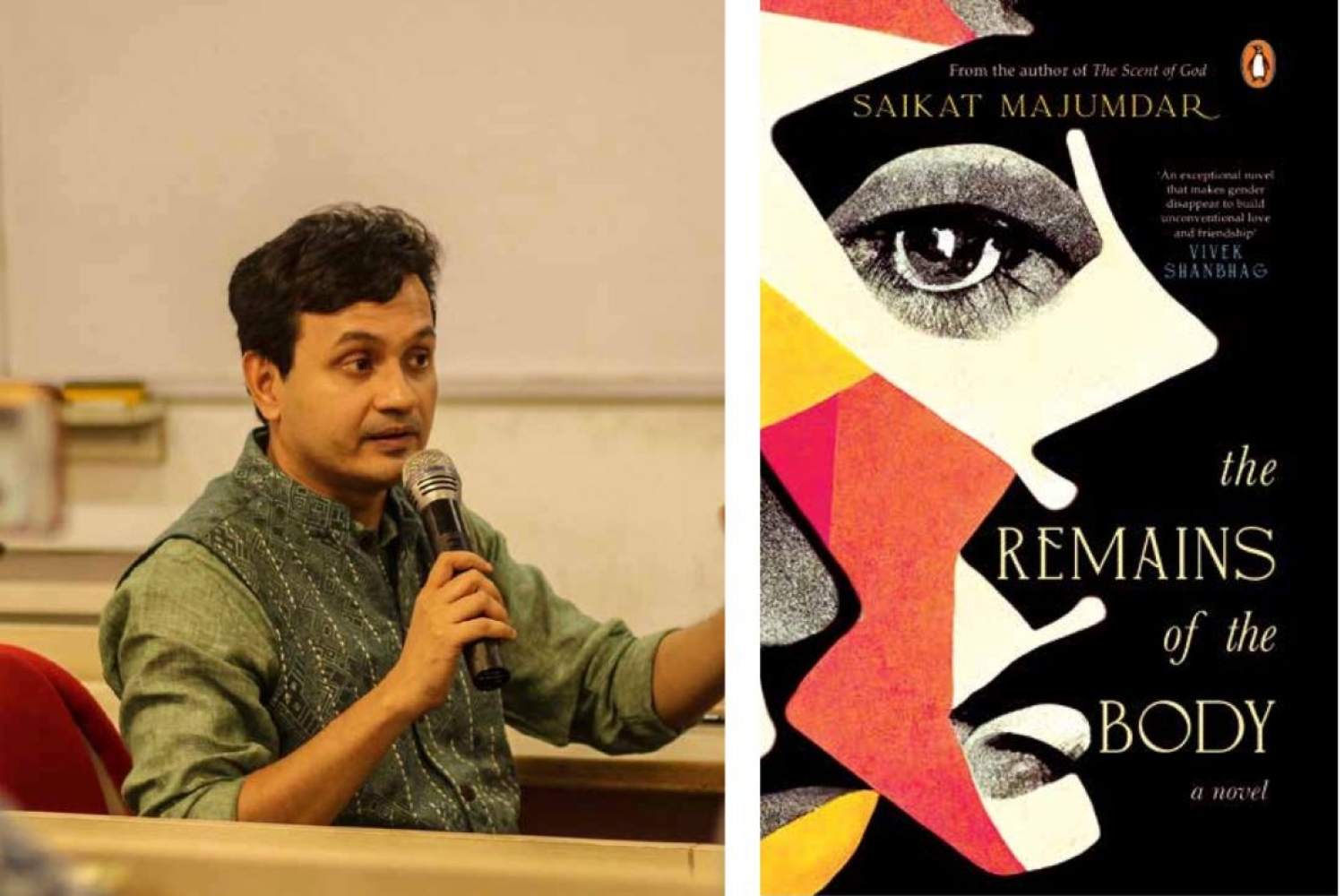

Saikat Majumdar’s new fiction, The Remains of the Body, follows the lives of three Indian immigrants navigating life in North America while exploring the unpredictable nature of human sexuality. With the conflicting angles of immigrant ambition, the book explores the phases of a crumbling marriage with an affair that leads to the confrontation of desire and sexuality beyond the heteronormative structure.
We sat down with him to discuss his creative process whilst crafting his newest work.
Throughout your literary journey, what has inspired you to write?
Atmosphere is very important to me, something that can be felt, smelt, and touched. The memory of the atmosphere is always a powerful writing impulse. In The Firebird, it was the atmosphere of a theatre, both attractive and terrifying to the young son of an actress – that of watching plays from the wings and the smell of make-up in the green room. In The Scent of God, it was the mixture of the erotic with the spiritual, the bodies of pubescent boys touching each other in the prayer hall of a monastic boarding school.
In my last three novels, desire has emerged as a key narrative instinct, particularly disruptive desire. The Scent of God is very about desire as it gets entangled with spirituality, and in The Middle Finger, a contemporary college campus retelling of the Ekalavya story, the unusual mentor-mentee relationship is shot through with unexpected intimacies. The Firebird too, is driven by the young child’s destructive obsession with his mother’s life as an actress, and the way she gets sexualized by certain sections of society. Inexpressible desire woven into marriage and friendship is the theme of the new novel.
You talk about the shapelessness of human sexuality while describing your latest novel. Can you tell us more about how this plays out in your writing?
I’ve been tempted to describe the new novel in a couple of different ways. One is about pansexuality, attraction for multiple genders as a kind of universal humanism – one which, for this protagonist, turns out to be a failed dream. Another way would be to imagine him as a gay man trapped in a straight body – much the way we are sometimes stifled by the gender we’re given at birth. Beyond his character, however, I think this book ends up showing that what we call queer is actually a pervasive reality, and the heteronormative ideal is just that – an ideal that is forced due to the needs of the state and the market. And our sexualities may change shape at different moments of our lives, in the face of different relationships – conjugal, social, family kinship, professional, public, whatever. We are not the same person everywhere, and neither are our intimacies and desires. For me, this shapelessness is what is queer; the terms gay or straight cannot always capture them.
Why did you choose to place your characters as immigrants in North America? Do you think the setting contributes to the character’s relationship with their sexuality in any way?
Yes, this book is set entirely in North America, particularly in California and the Canadian provinces, but it is less attentive to the physical details of the setting than my previous books. In that sense, it is less atmospheric, focusing more on conversation and the tension between characters. Indian cities are for me magnetic places where the quiet interiority of characters’ lives are punctured incessantly, by the sight and the sound of the neighbourhood, by the proximity of labour, by the general chaos of life. I think the quiet of North American suburban life allowed me to look away from the atmospheric exterior and focus on their inner lives. Not to imply that noisy neighbourhoods cannot shape interiority – in fact, that is what I’ve always tried to do. But the quietness of American life created a different backdrop. But under this “quietness”, the feverish aspirations of immigrant life are important, which takes its toll on the marriage in this novel.
Tell us about the title of this book?
A key theme of this novel is our awareness of the chang- ing bodies of friends we’ve known for a long time – in this case, since childhood, through puberty and sexual aware- ness, youth, even the stirrings of middle age. Thinking of the growing, and ageing body of your friend is like star- ing at a mirror, but one not available for your own body. But this awareness lives in the context of a friendship between two “straight” men, and for the protagonist, it
is impossible not to wonder about the line that keeps this awareness from being sexual, particularly since they’ve also shared the experience of sexual coming of age. How this awareness affects his relationship with his friend’s wife makes up a story of rather strange desire. Quite a bit happens in its course – the disintegration of a marriage, the shuffling of career ambition, strains on friendship – but the haunting of this physical awareness remains through it all. My ten-year old immediately thought this was a murder mystery, so that was also an excellent reason to stay with this title!
This is an exclusive excerpt from our June EZ. To read the entire article and more such pieces, follow the link here.
Words Aliya Anand
Date 16.06.2024